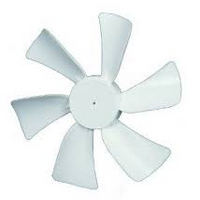


Moving air in this downward direction creates a cooling sensation on your skin even though the temperature of the room doesn’t change. When the fan’s blades turn counterclockwise, they push the air in the room downward. Also, the switch used to change the direction of the circulation is typically located on the base of the fan that’s mounted to the ceiling.įor Summer Cooling, Set the Ceiling Fan to Tur n Counterclockwise If you’re one of these homeowners, print this blog and hang it on your refrigerator so you’ll never have to wonder again.īefore you get started, it’s important to know that the direction of the fan’s circulation is determined by looking up at the fan from below (as opposed to thinking about a view from above). Warm air naturally rises, and the gentle updraft created by this setting allows for the redistribution of warm air that tends to accumulate near the ceiling.With every change of season, homeowners find themselves looking up at their ceiling fans and wondering which direction the blades should be turning to maximize the efficiency of their heating or cooling system. In cooler months, your ceiling fan should be spinning clockwise at a low speed.

In turn, you can adjust your thermostat to a lower setting, but still keep warm and save on your heating costs. Your ceiling fan can help distribute and maintain heat pumped out your furnace. Using a ceiling fan in the winter may seem counterintuitive, but it could save you as much as 15 per cent on your heating bills. How do ceiling fans work for colder weather? You should also consider installing more than one fan if the room you’re trying to keep cool is larger than 500 square feet. You can adjust them to a larger degree, but any angle above 16 degrees may blow around loose objects. The angles of your ceiling fan blades should be set to a minimum of 12 degrees for maximum cooling. A good ceiling fan can make you feel significantly cooler while saving energy. This helps keep a room’s temperature consistent throughout the day and reduces the need for an air conditioner to run constantly. When your ceiling fan spins quickly in this direction, it pushes air down and creates a cool breeze. Which way should a ceiling fan turn to keep you cool in the summer?ĭuring summer months, your ceiling fan blades should be set to spin counterclockwise. Know what to look out for when making your next purchase with our AC buying guide. To maximize energy efficiency, pair your ceiling fan with an ENERGY STAR ®-certified air conditioning unit, which uses eight per cent less energy than standard models. While it may not replace your air conditioning entirely, a ceiling fan will complement your air conditioning unit and help you save on air conditioning costs in your home. A ceiling fan, on the other hand, uses approximately 50 watts. On average, a standard high-efficiency central air conditioning unit uses 3,500 watts of power when it’s in use. That can be an effective way to remove heat from warm air, but they can be expensive if they’re the only source of cooling in your home. To escape the summer heat, many people rely on air conditioning units to cool their homes. Why use a ceiling fan with my air conditioning?

Why? Setting the direction of your fan blades will help you control the temperature in your home, so you can save on both cooling and heating costs. Nearly all ceiling fans have a switch located on the side of the fan base that lets you change the direction of the fan blades. There’s a simple switch that can keep you comfortable in the heat or the cold, depending on the season – and it can save you money.


 0 kommentar(er)
0 kommentar(er)
